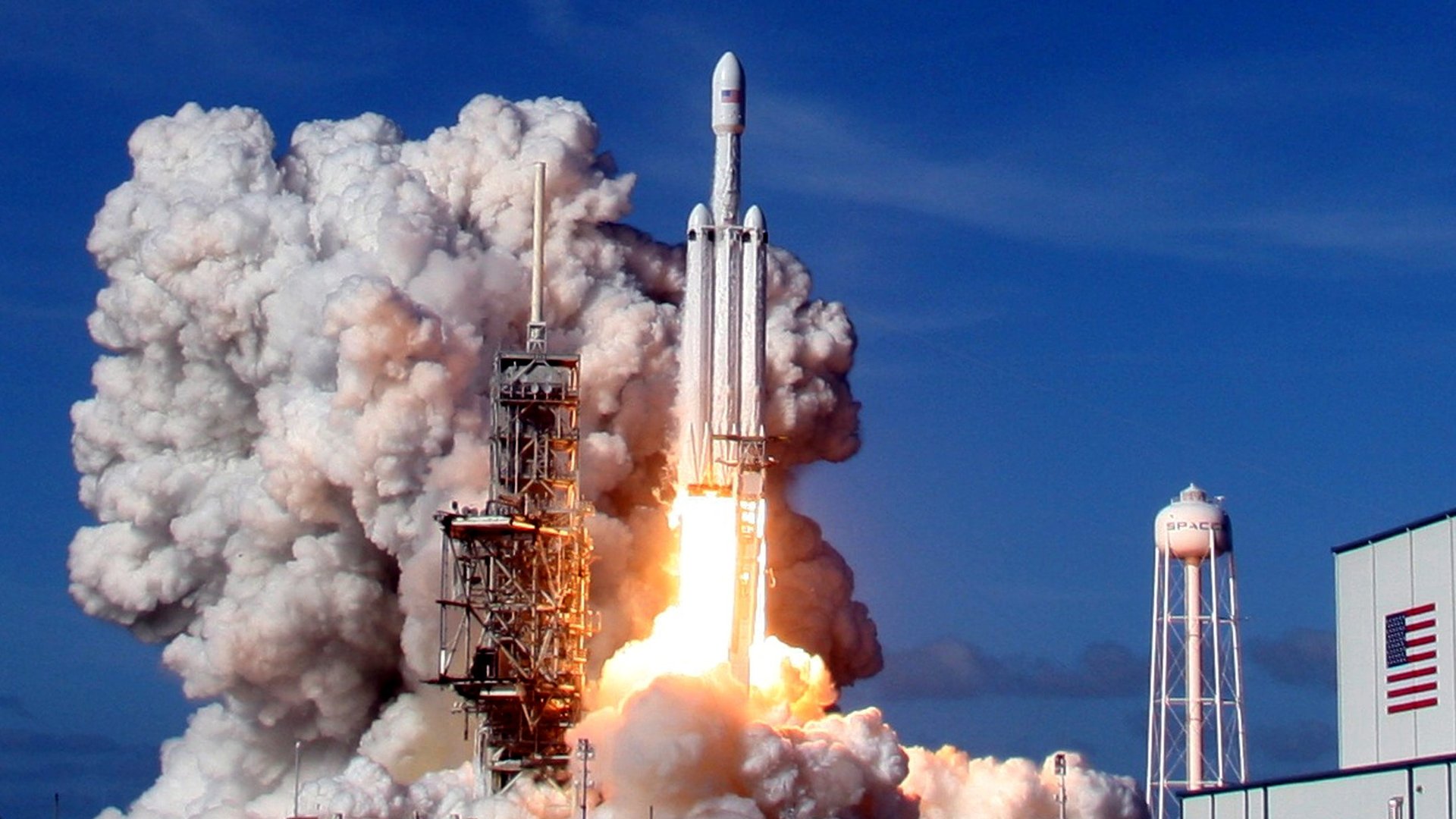Elon Musk’s big Falcon Heavy rocket might find a market after all
Two companies have signed deals to launch their satellites on SpaceX’s Falcon Heavy rocket, the most powerful space vehicle in operation today.


Two companies have signed deals to launch their satellites on SpaceX’s Falcon Heavy rocket, the most powerful space vehicle in operation today.
ViaSat, which provides internet service from space, chose the Falcon Heavy to launch one of its next generation internet satellites between 2020 and 2022. Ovzon, a Finnish start-up that expects to deliver mobile broadband from orbit, hired SpaceX’s big lifter to deliver their satellite on a similar time-frame.
Market maker
SpaceX also sold one of the rockets to the US Air Force this summer, to go along a previously planned experimental mission bought by American space command. The vehicle is also contracted to launch a satellite for the company ArabSat. Beyond those five upcoming flights scheduled for the Falcon Heavy, with the first expected in spring 2019, the satellite operator Inmarsat has an option to fly on the Falcon Heavy as well.
Since its debut launch put Elon Musk’s red Tesla roadster into orbit around the sun in February 2018, the role of the vehicle hasn’t been entirely clear. SpaceX’s Falcon 9 continues fly satellites and missions to the International Space Station about twice a month, while the company’s design team is focused on the BFR, an even larger rocket to realize the company’s vision of travel within the solar system.
The Falcon Heavy cost more than $500 million to design and develop, and offers a starting price is $90 million, though the version purchased by the US Air Force cost $130 million. Though we don’t know the vehicle’s profit margin, it’s safe to say it will take many flights for SpaceX to recoup its investment in Falcon Heavy.
Satellite market analysts have been skeptical about the Falcon Heavy’s ability to get into the black because of softness in the market for the kind of large geostationary satellites it is designed to fly. But industry sources predict that it would win launch contracts from the US government because it is significantly cheaper than the other American heavy-lift rocket, United Launch Alliance’s Delta IV.
Vulcan’s shadow
United Launch Alliance is currently building a new rocket called Vulcan Centaur that will compete with SpaceX’s offerings and replace its own Atlas and Delta systems. ULA even teamed with Amazon billionaire Jeff Bezos, whose company Blue Origin will build the engine for Vulcan.
Earlier this month, the US Air Force chose three companies to develop rockets for future military missions, handing out several billion dollars in funding. Surprising many, SpaceX didn’t win an award, with federal funds going to ULA, Northrup Grumman and Blue Origin instead.
SpaceX could still compete for these contracts when they come up for bid sometime after 2020. A new slide detailing the projected capabilities of the Vulcan, which is expected to cost less than $150 million, gives us an idea of how that competition might go.
The chart below shows two versions of the Vulcan, one with two attached solid rocket boosters and another with six, compared to the Falcon 9 and the Falcon Heavy. Each one is measured by what they can carry to different orbits—low-earth orbit (LEO), where the International Space Station is; a geostationary transfer orbit (GTO), which puts the satellite on a path to orbit high above one place on earth; and geostationary orbit (GEO), which is a direct flight to orbit high above one place on earth.
The next generation of rockets
As both are advertised, the Vulcan Centaur does seem competitive with SpaceX’s Falcon 9, although we won’t know for sure until we see the sticker price. Interestingly, the six-booster configuration is still not as capable as the Falcon Heavy.
However, the Falcon 9 has never flown a mission direct to geostationary orbit, and while Falcon Heavy can, we don’t know how much payload it can take. While there is an even larger Vulcan version expected in 2023, it does seem like the Falcon Heavy could be remain a competitive choice for national security launches for the foreseeable future.
There are two other potential choices in the running: Northrup Grumman’s proposed solid-booster rocket OmegA could compete as a heavy-lifter carrying as much as ten metric tons to geostationary orbit, but its cost is not public. Blue Origin’s New Glenn is a huge reusable rocket that promises to carry as much as 45 metric tons to low-earth orbit, but may not be ready until 2022.
The big mystery yet to be solved is which of these new rockets can compete with SpaceX’s rock-bottom prices.